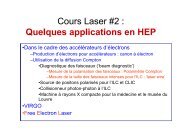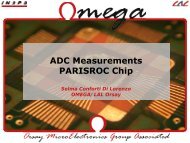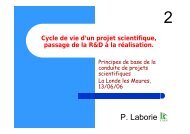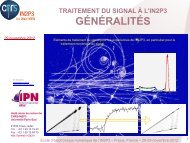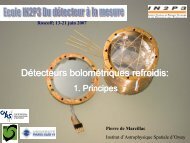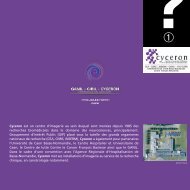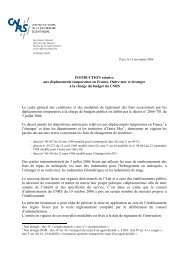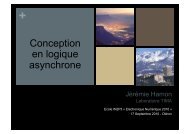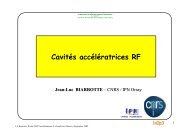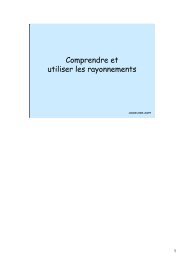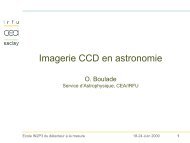Composants: fonctionnement, modèles (Richard Hermel) - IN2P3
Composants: fonctionnement, modèles (Richard Hermel) - IN2P3
Composants: fonctionnement, modèles (Richard Hermel) - IN2P3
You also want an ePaper? Increase the reach of your titles
YUMPU automatically turns print PDFs into web optimized ePapers that Google loves.
Miroir de courant – charge active<br />
VDD<br />
VDD<br />
VDD<br />
VDD<br />
Iref<br />
M1<br />
charge<br />
I2<br />
M2<br />
Iref<br />
M’2<br />
Vin<br />
M2<br />
I0<br />
M1<br />
Vout<br />
CL<br />
M1 est monté avec Grille et<br />
Drain réunis<br />
⇒ il impose VGS1 = VGS2<br />
⎛W<br />
⎞ ⎛W<br />
⎞<br />
⎜ ⎟ = n⎜ ⎟<br />
⎝ L ⎠ ⎝ L ⎠<br />
I = nI<br />
2 1<br />
2 ref<br />
IDS<br />
I2<br />
Iref<br />
VDS1 = VGS1<br />
VSS<br />
VSS<br />
Montage inverseur polarisé par source de<br />
courant + miroir. M’2 ≡ M2 ⇒ I0 = Iref<br />
VGS1=VGS2<br />
VDS2<br />
Dépend de la charge<br />
I2 ≠ Iref à cause de la pente de<br />
la caractéristique IDS = f(VDS)<br />
VDS<br />
<strong>Richard</strong> HERMEL LAPP Ecole d'électronique <strong>IN2P3</strong> : Du détecteur à la numérisation Cargèse Mars 2004<br />
32




